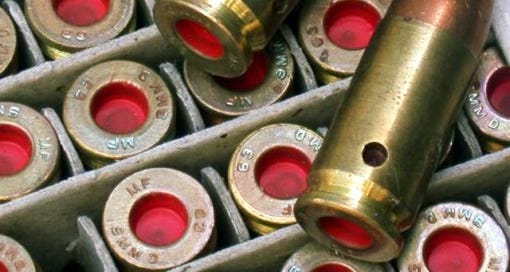Dummy, Drill, and Inert (DDI) Ammunition
If you work with ammunition, a type of munition often comes up is that of Dummy, Drill, and Inert (DDI) Ammunition. These rounds are similar to other ammunition but are inert, containing no primer, propellant, or explosive charge.
Often DDI ammunition is said as one or just said interchangeably. But what is each different ammunition type?
· Dummy Ammunition
· Drill Ammunition
· Inert Ammunition
I started with a review of Army Regulation 5-13 Army Munitions Requirements, Prioritization, and Authorizations Management Policy, which sounds like a regulation containing information on the requirements for DDI ammunition. I discovered that the acronym DDI now stands for dummy, drill, and other wholly inert (DDI) munitions. The dummy, drill, and inert munition items are “Munitions or munitions components that have the appearance of actual service munitions but do not contain any energetic components.”
While the definition and an updated acronym provide a better description of DDI ammunition, it does not offer insight into the context of the separate categories. I continue my search and dive into Army Techniques Publication 4-35.1, Ammunition and Explosives Handler Safety Techniques, which has an Appendix for Ammunition Identification. The appendix has Table B-2 used for Ammunition color coding and references United States Military Standard (MIL-STD) 709D.
The table interprets the colors of bronze, gold, and brass as “Identifies dummy/drill/inert ammunition not for firing but only used for handling, loading, assembly, and testing, training and display.”
Table 1. Extract Ammunition color coding, ATP 4-35.1, Ammunition and Explosives Handler Safety Techniques.
Military Standard 709D Ammunition Color Coding provides the most comprehensive definition for each dummy, drill, and other wholly inert munitions category. But adds some more distinct definitions that expand on the topic of this article. But first, let’s review the available definitions in the military standard:
· Dummy Ammunition. Inert ammunition used for maintenance operations and training purposes.
· Inert Ammunition. Ammunition void of all energetics such as propellant fill and primer.
The standard leaves out drill ammunition but hints at what the drill category might be in the exceptions section. It states, “Inert ammunition used in drill training or for clearing automatic weapons and for which no protective coating is required or which has a cadmium plate/chromate treatment for the protective coating.” To find the definition, we would have to go back to the 1986 Field Manual No. 9-13 Ammunition Handbook, A Guide for Ammunition Specialists. In the field manual, we see that the category of drill ammunition had a definition:
· Drill Ammunition. Inert ammunition for training the weapons’ crew.
The current military standard for ammunition color coding groups the above categories into non-practice (dummy) ammunitions/munitions. These are munitions that are completely inert and not designed or intended to be used with energetic material. The munitions are representative of combat or practice material and are used in activities such as, but not limited to: assembly, handling proficiency by personnel without firing or launching, weapons testing or handling operations, instruction, training, gauging, and maintenance.
One key takeaway is not to confuse DDI or non-practice (dummy) ammunition with training-unique ammunition. These munitions replicate the characteristics of a round used in operations while minimizing cost and damage to range facilities (for example, short-range training munitions, simulation rounds, and blank munitions).
Practice ammunition/munitions are designed for use in place of the combat equivalent to provide training, practice, or systems testing through activities such as, but not limited to: launching, flying, firing, dropping, and prepositioning. These ammunition/munitions may or may not contain explosives to indicate functioning.
The complex nature of munitions often makes it hard to distinguish between different categories. Inert munitions are void of all energetics, while drill ammunition provides training for weapons’ crew and dummy ammunition is for maintenance operations and training purposes. While the categories are interrelated, having a good grasp of subtle differences allows you to be better prepared and highly proficient in your profession.
Table 2. Extract Ammunition Color Code and Application, Military Standard 709D Ammunition Color Coding.
References (Distribution Statement A. Approved for public release; distribution is unlimited):
MIL-STD-709D, AMMUNITION COLOR CODING, 2011.
FM 9-13, AMMUNITION HANDBOOK, 1986.
ATP 4-35.1, Ammunition and Explosives Handler Safety Techniques, 2021.
Army Regulation 5-13, Army Munitions Requirements, Prioritization, and Authorizations Management Policy, 2021.








